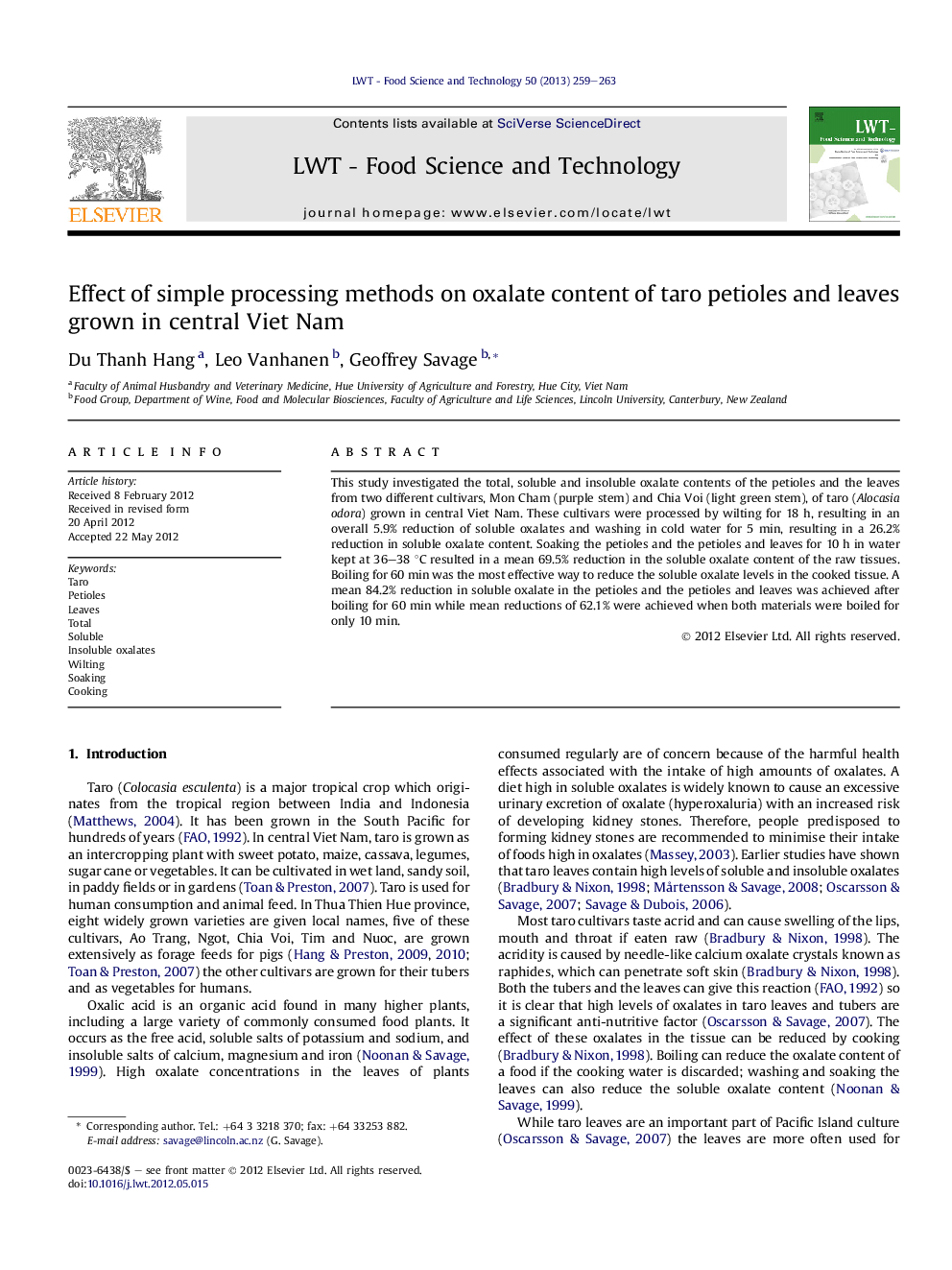| Article ID | Journal | Published Year | Pages | File Type |
|---|---|---|---|---|
| 6405044 | LWT - Food Science and Technology | 2013 | 5 Pages |
This study investigated the total, soluble and insoluble oxalate contents of the petioles and the leaves from two different cultivars, Mon Cham (purple stem) and Chia Voi (light green stem), of taro (Alocasia odora) grown in central Viet Nam. These cultivars were processed by wilting for 18 h, resulting in an overall 5.9% reduction of soluble oxalates and washing in cold water for 5 min, resulting in a 26.2% reduction in soluble oxalate content. Soaking the petioles and the petioles and leaves for 10 h in water kept at 36-38 °C resulted in a mean 69.5% reduction in the soluble oxalate content of the raw tissues. Boiling for 60 min was the most effective way to reduce the soluble oxalate levels in the cooked tissue. A mean 84.2% reduction in soluble oxalate in the petioles and the petioles and leaves was achieved after boiling for 60 min while mean reductions of 62.1% were achieved when both materials were boiled for only 10 min.
⺠Raw taro leaves and petioles contain high levels of total and soluble oxalates. ⺠Wilting, washing and soaking reduces the soluble oxalate content of taro leaves. ⺠Cooking the leaves and petioles reduces the soluble oxalate content.
